
Anyone who suffered through the early days of gluten-free products knows that flavor often took a backseat to texture. To achieve flaky crackers and tender breads, manufacturers used less-than-nutritious ingredients such as white rice flour and potato and tapioca starches, which resulted in "passable" gluten-free products—but not ones that tasted particularly good or were especially nutritious. Luckily, market forces (such as customers demanding more) have driven companies to strive for the holy grail of great taste, great texture and improved nutrition. By incorporating add-ins such as nuts, seeds and brown rice flour, even non-celiac shoppers now find gluten free satisfying.
Sales of certified-gluten-free foods increased from $2.6 billion in 2007 to $5 billion in 2012 and are projected to reach $8.5 billion by 2015, according to Nutrition Business Journal. Pasta in particular has benefitted from new formulations that incorporate dehydrated vegetables and even legumes for ideal al dente bite and a nutritional boost. Shelf-stable, certified-gluten-free pasta sales increased 16 percent to $6.8 million in the natural channel in the 52-week periodending May 12, according to SPINS. Sales of refrigerated fresh options, which can closely mimic traditional textures and flavors, swelled 158 percent in the same period.
Taste tested, grandma approved
It should be a crime to pair a rich marinara or luscious cream sauce with a merely tolerable gluten-free pasta. Luckily, more and more manufacturers agree. To move past the once-commonplace mushy, shapeless gluten-free noodles, brands are pairing Old World standards with New World ingenuity. Black bean rotini and non-GMO-corn-based orzo are certainly not traditional, but the proof are noodles that hold their shape, cook up al dente and taste delicious. Typical spaghetti or macaroni varieties aren't gluten-free shoppers' only choices. Gourmet options, from Italian-produced tagliatelle to fresh spinach fettuccine, boast better-for-you ingredients that emphasize, rather than cover up, what this new generation of pasta delivers.
Stock up on these 5 editor's picks
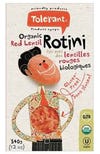 Tolerant Black Bean Rotini
Tolerant Black Bean Rotini
With just one ingredient—black beans—there’s impressive innovation behind this certified-organic, Non-GMO Project Verified rotini. It cooks up perfectly in just 6 to 8 minutes and has 22 grams of protein and 15 grams of fiber per 3-ounce serving. Delicious and totally genius!
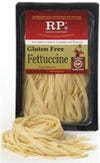 RP's Gluten Free Spinach Fettuccine
RP's Gluten Free Spinach Fettuccine
For flavor and texture, this fettuccine steals the show every time. Tender, with a perfect al dente bite and just a hint of spinach flavor, you'd never know it's wheat free. Of course, I’m not the only fan. O magazine named the pasta to its Healthy O List just last year. "Tastes like traditional pasta," raved one reviewer. I agree.
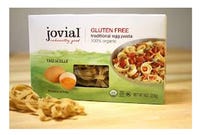 Jovial Tagliatelle
Jovial Tagliatelle
Brown rice flour grown in Italy and eggs from pasture-raised hens ensure the decidedly Old World flavor of this Italian classic. The long, flat ribbons are crafted using traditional methods, including a slow drying process for authentic texture. Bonus: Noodles come packaged in a Forest Stewardship Council wood pulp compostable bag.
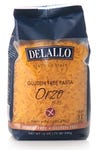 Delallo Orzo
Delallo Orzo
Delallo finally dips its toe into the gluten-free pool with three new SKUs. This non-GMO orzo keeps it simple with just corn and rice ingredients produced in Italy. The company earns instant gluten-free cred for safeguarding against cross-contamination by building its own mill and pasta factory dedicated specifically to gluten-free products.
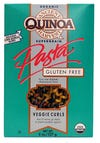 Ancient Harvest Veggie Curls
Ancient Harvest Veggie Curls
The quinoa flour used in these certified-organic mac 'n' cheese-worthy curls offers an impressive 5 grams of fiber and 4 grams of protein per 2-ounce serving. Kid-friendly colors come from dried spinach, beets and red bell peppers—perfect for any parent hoping to sneak in a little more nutrition.
About the Author
You May Also Like
.png?width=700&auto=webp&quality=80&disable=upscale)



